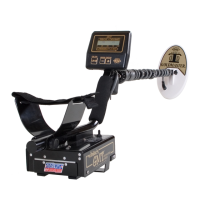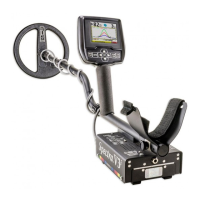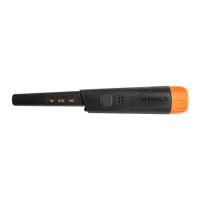Page 12
MX5
Owner’s Manual
In Depth
VDI
VDI stands for Visual Display
Indicator and is a numeric represen-
tation of the target’s response. VLF
detectors transmit a magnetic field
which is disrupted by nearby metal
targets. The disruption is seen by the
receiver as an increase in signal
amplitude (which gives a basic “I
found something!”) but also creates
a signal phase shift. This phase shift
usually indicates the type of target
and can be used both for identifying
targets and for discriminating or
rejecting them.
White’s uses a VDI scale of -95
to +95, where negative numbers cor-
respond to ferrous (iron) targets and
positive numbers to non-ferrous tar-
gets. A chart of typical VDIs is
shown on the right. Note that the
scale is not linear.
There is a lot of overlap amongst
targets. For example, due to the vari-
ety of sizes and alloys, gold rings
can give the same responses as foil,
nickels, and pull tabs. Likewise, pull
tabs often look like nickels and vice-versa. Even the smallest of
nuggets can extend slightly in the ferrous region.
The VDI is by no means foolproof and should be considered
only a probability estimate. As we’ll see in the section on
Depth, the probability decreases with depth. An excellent
approach is to work with test targets (especially planted at dif-
ferent depths) to get familiar with target responses.

